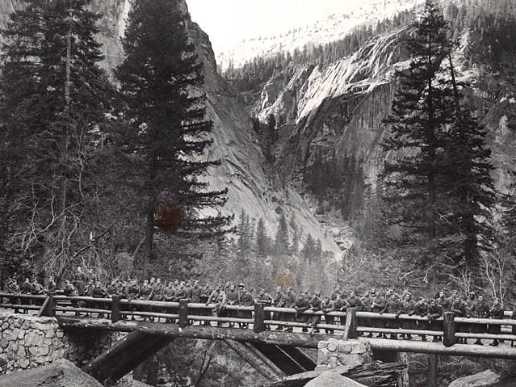Last updated: May 23, 2018
Article
The Work of Ansel Adams and the Conservation Movement

Ansel Adams Photo
Whether or not you have visited the High Sierras, chances are you have seen the signature black-and-white photographs of Ansel Adams. The dramatic monoliths, towering sequoia trees, and roaring waterfalls that populate the region have always been sources of wonder for hikers, naturalists, and park visitors, but it was only when Ansel Adams captured these scenes with his camera that many Americans saw them. Ansel Adams’ love of nature and his work in capturing vistas within the Sierras and other protected lands for all to see changed the American art world to include nature photography. Adams’ work became an important part of the American conservation movement, providing a constant reminder of the landscapes that need to be protected.
As a youth, Ansel Adams spent much time outdoors developing a love of nature and taking photographs of these special places. He explored the High Sierra and developed wilderness survival skills that allowed him to access some of its most beautiful and wild spots.
Before Adams, the artists of the conservation movement spread the beauty of nature using paintbrushes and pastels. Ansel captured the splendor of the High Sierra with the lens of his camera, bringing a new level of realism to viewers back in the East. Where landscape artists used color and brushstrokes to show the beauty of the places that became part of the National Park System, many of Ansel’s photographs were minimalist, shot in black and white using sharp contrast and deep focus.
Ansel’s photography is known for its realist style. Rather than using a “pictorialist” style to create an artistic image, his work portrays the wonders of national parks as they appear. Adams’ work, therefore, is an amazing tribute to the High Sierras—we can view his awe-inspiring photographs and wonder how such beauty could possibly exist, only to see the sites ourselves when we travel to national parks.
One of the most important legacies of Adams is the way in which his photographs contributed to the American conservation movement. His technical expertise and the undeniable beauty of his work paved the way for photography to be exhibited beside traditional painting and portraiture in national galleries. The portfolios that Adams published gained worldwide recognition and made America famous for its special public lands.
